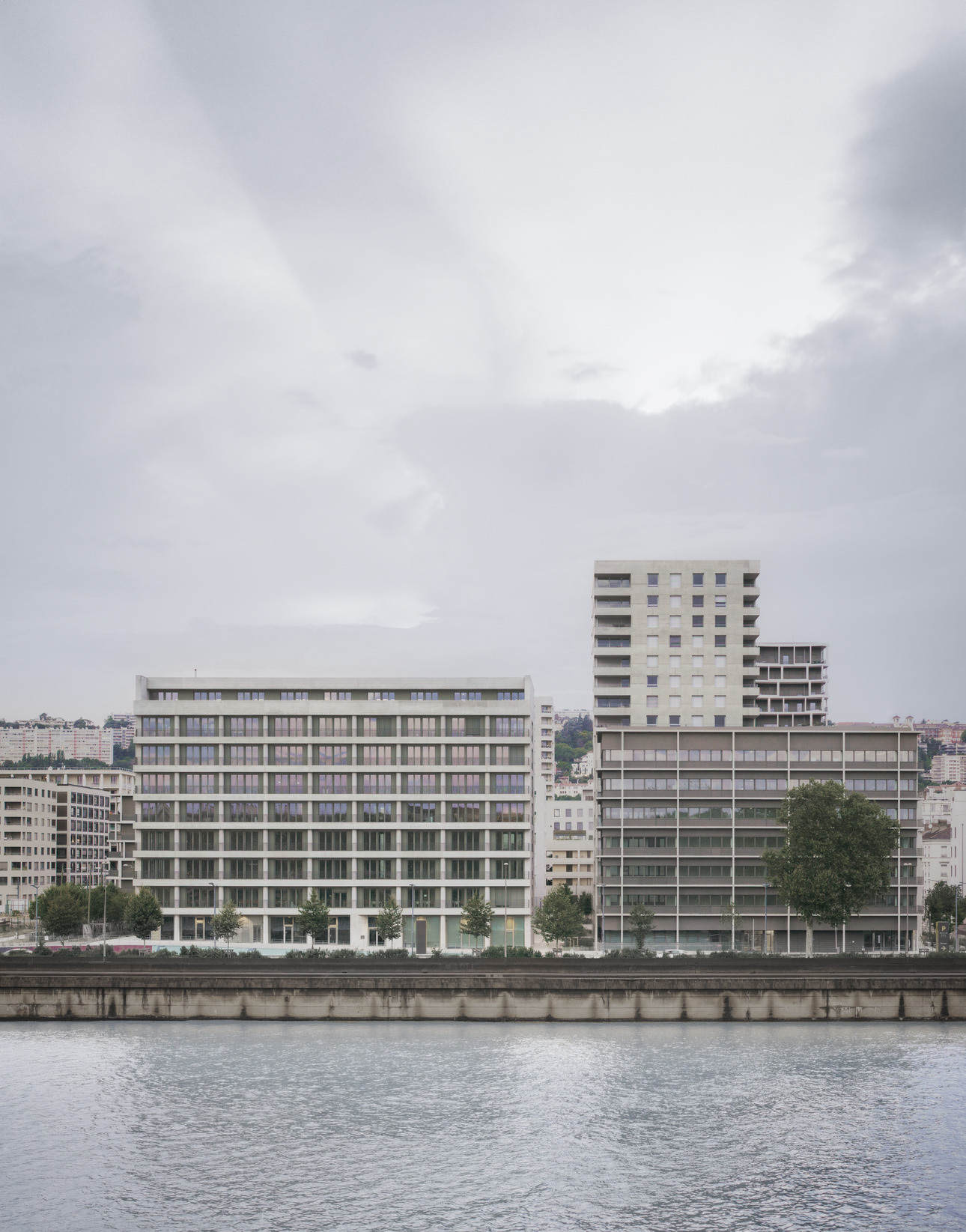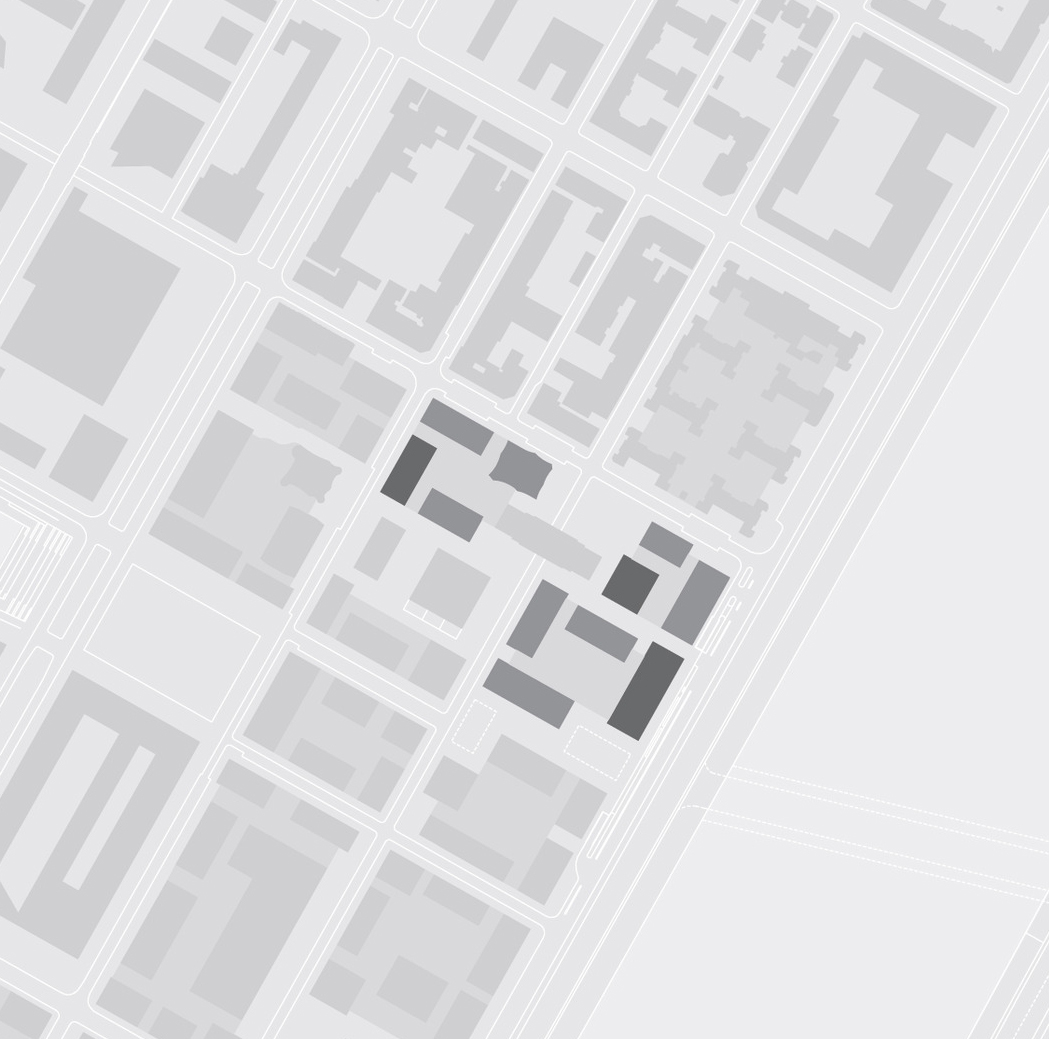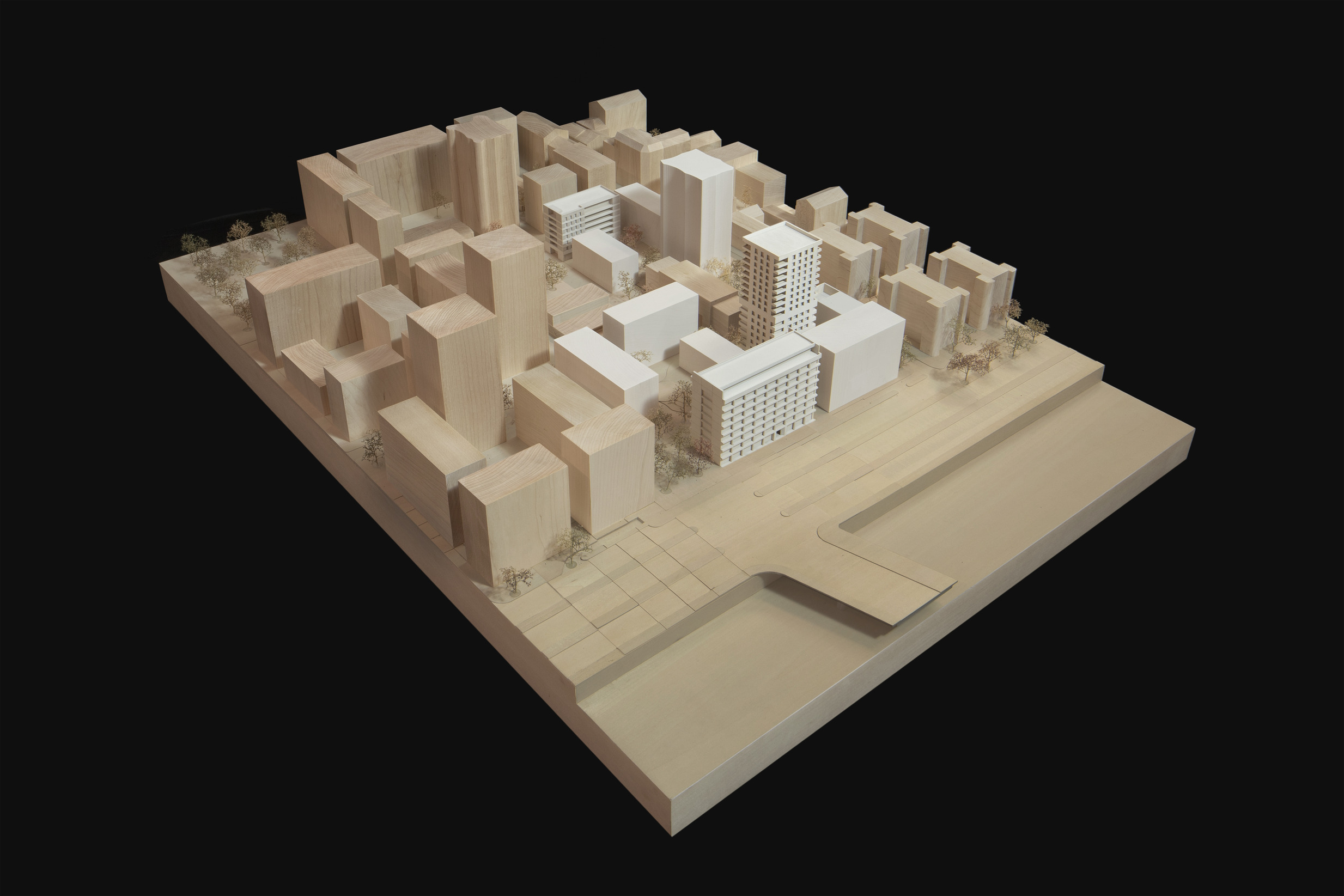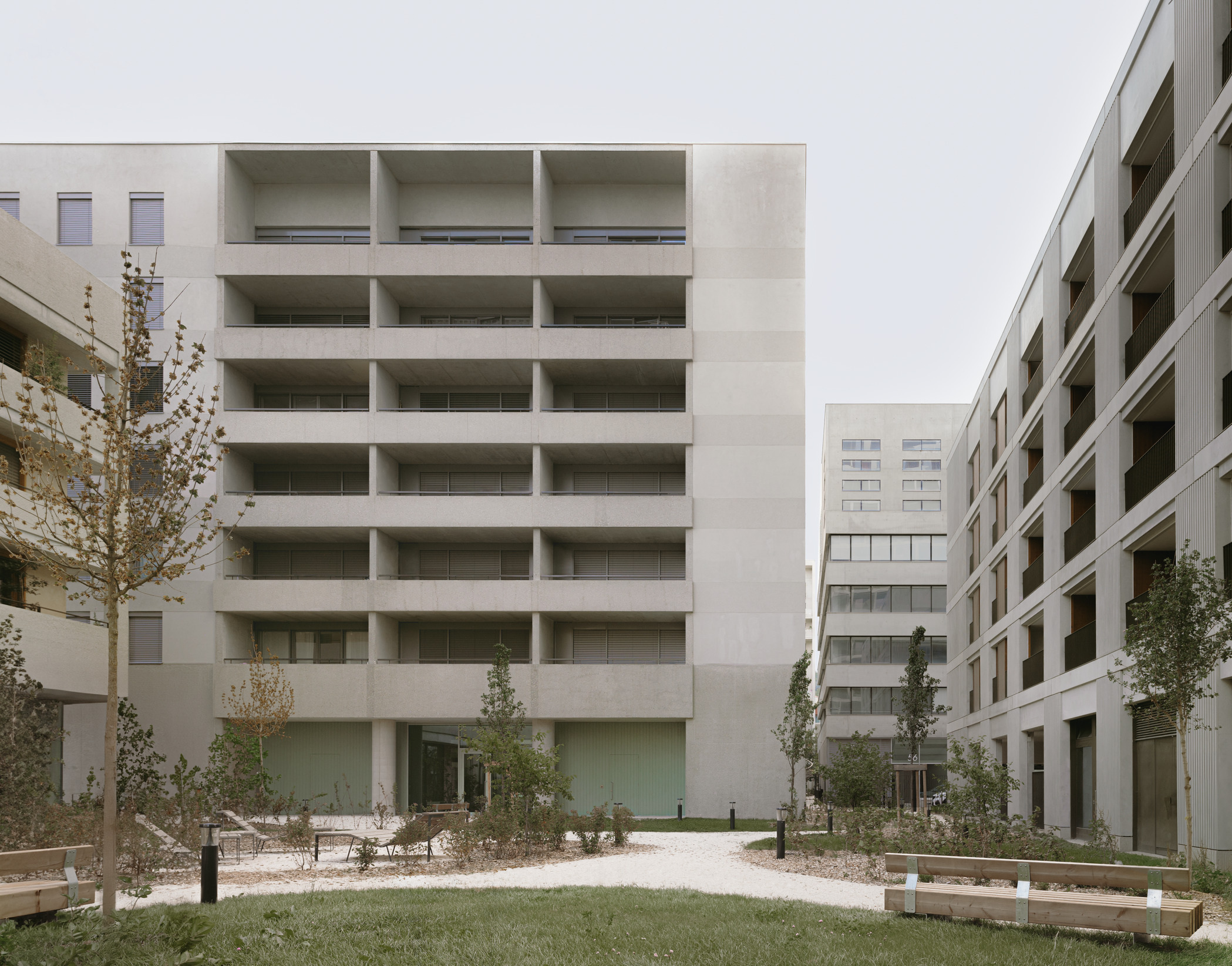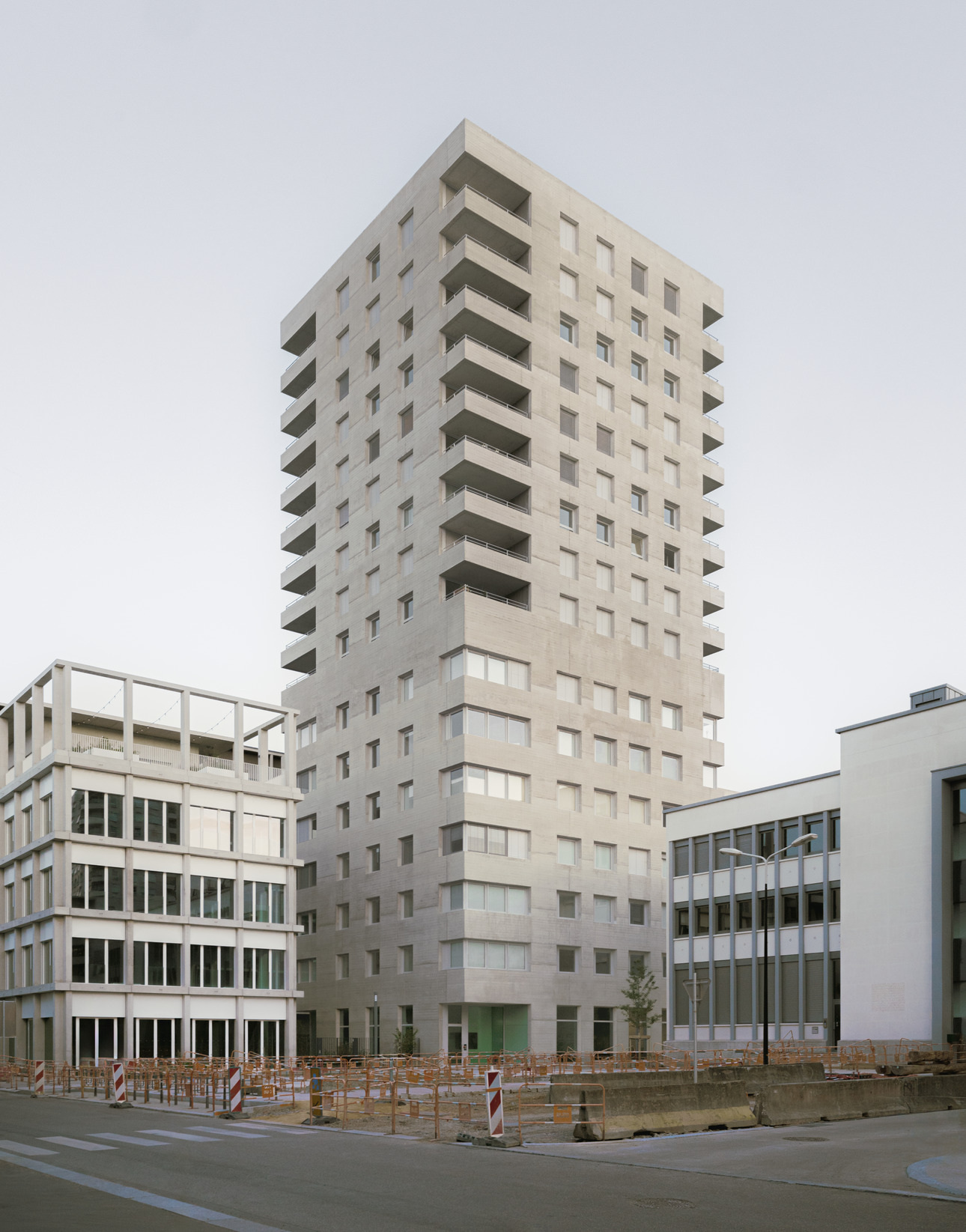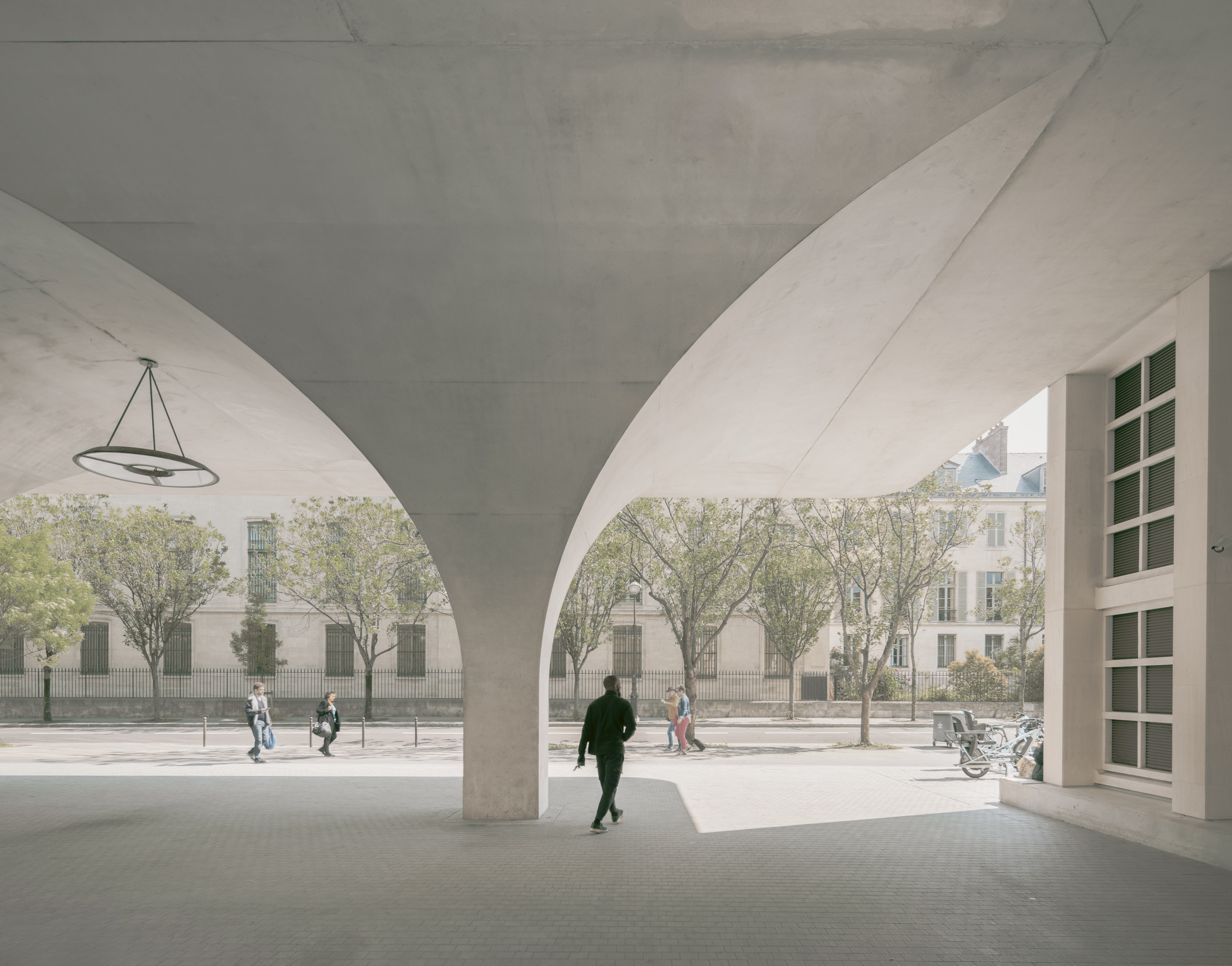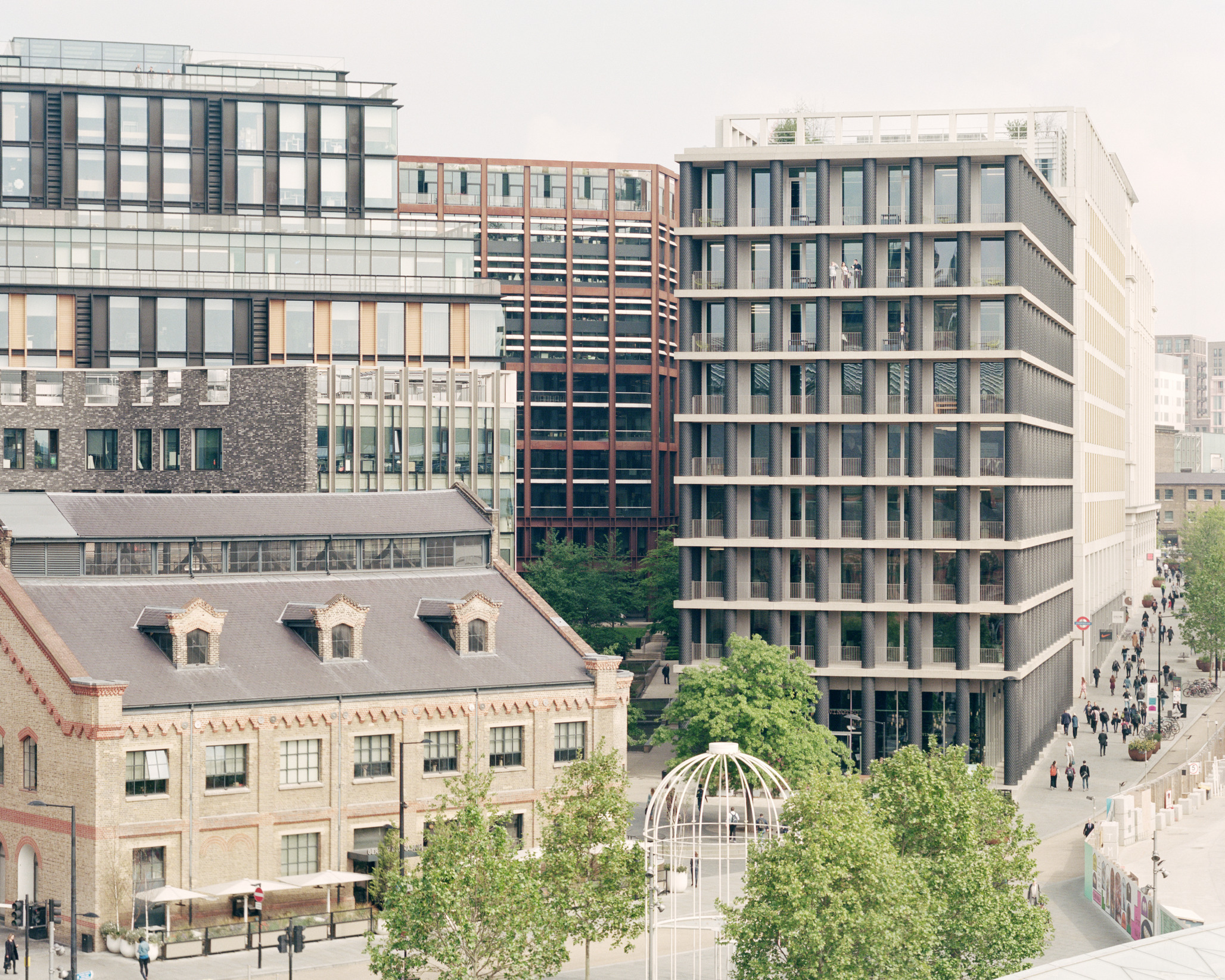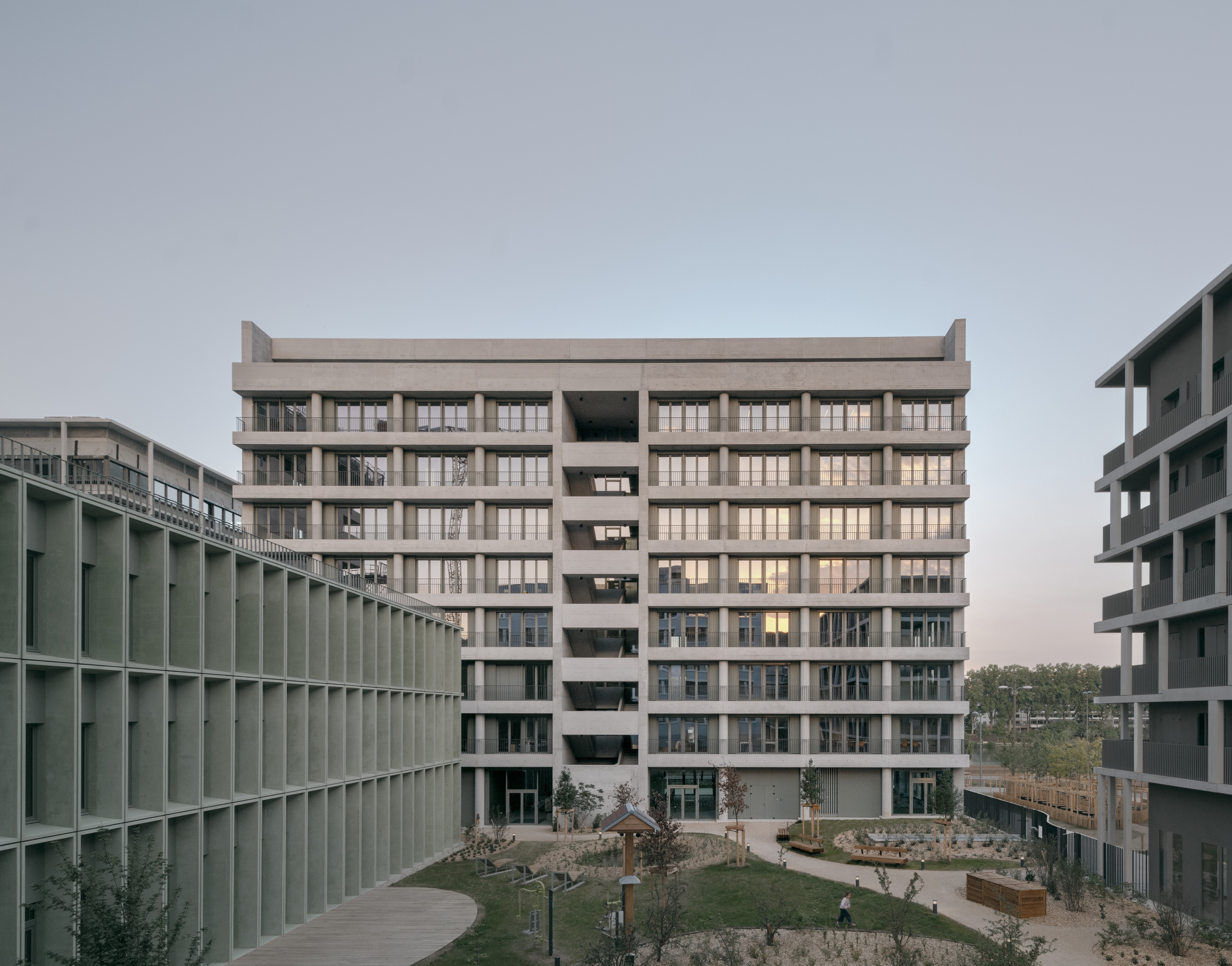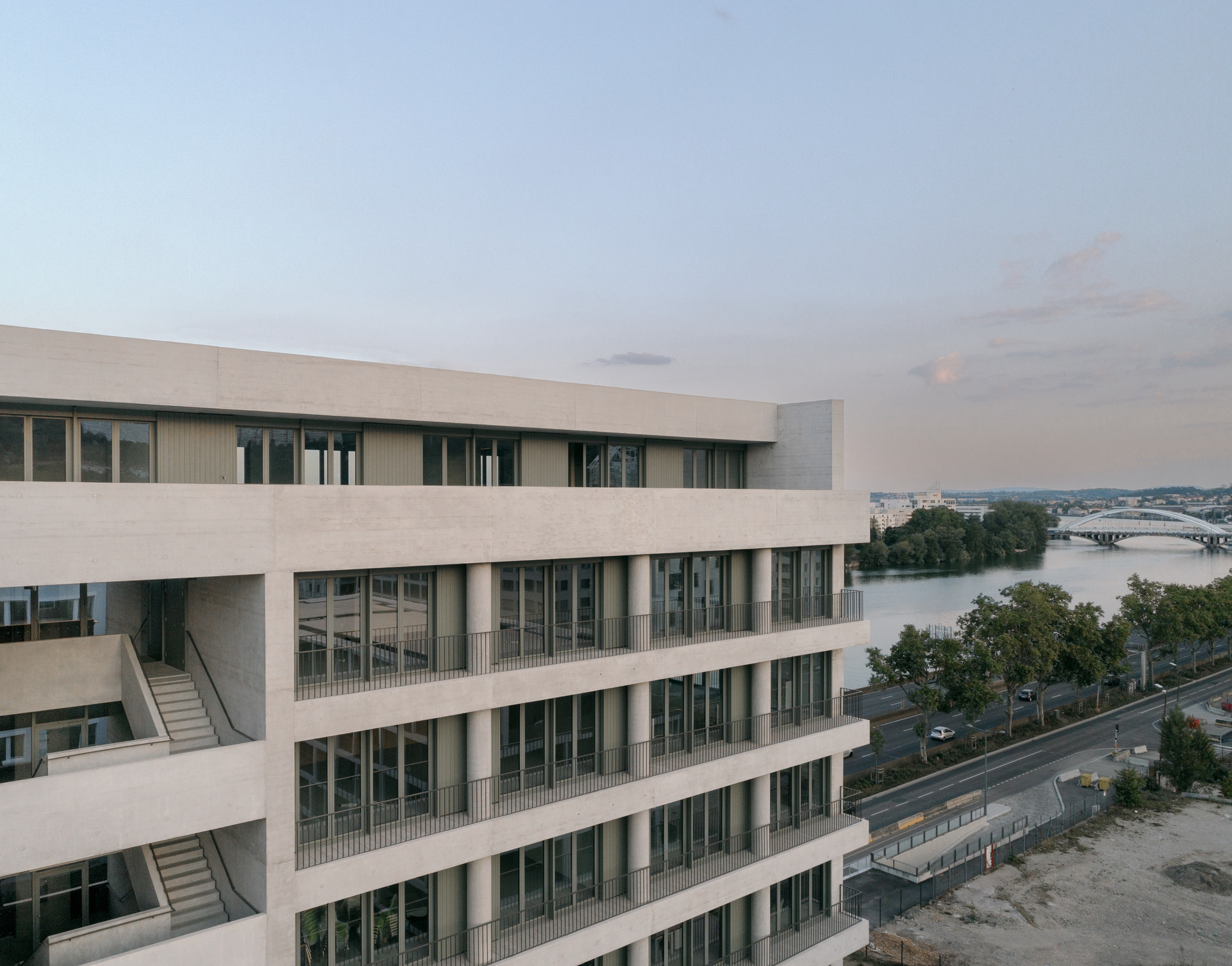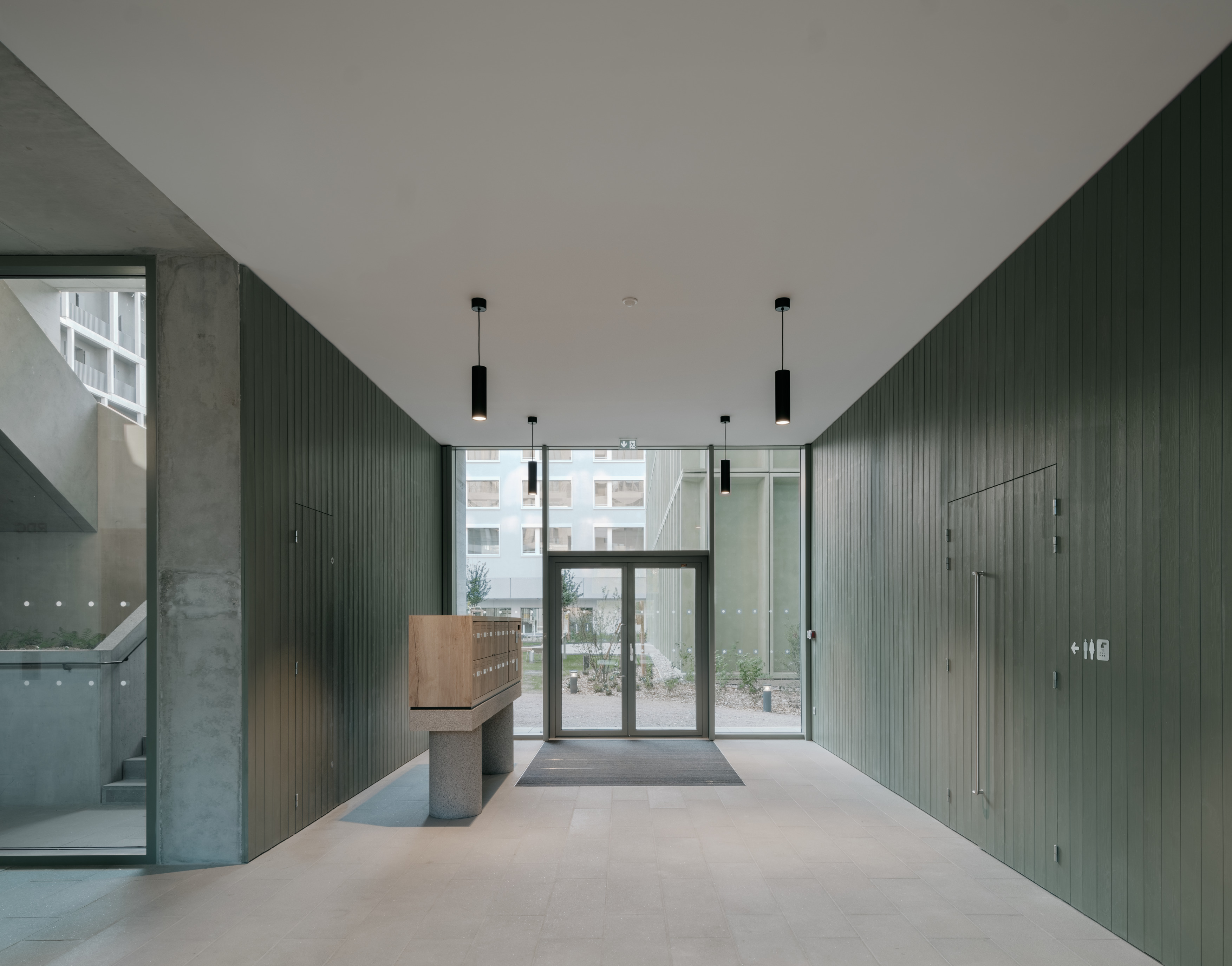Lyon Confluence
Lyon, France
2016–24
Central Lyon is located on a peninsula created by the Rhône and Saône rivers as they converge. The southern tip – La Confluence – has largely been used for industry although, in recent years, it has begun to be redeveloped. The project involved coordinating three urban blocks with eleven buildings within a masterplan by Herzog & de Meuron for the second phase of Lyon’s extension into La Confluence on a part of the site that was previously a market. The wider masterplan had to be adapted to the specific area and programme, and strategies were developed for the landscape, massing, organisation and façade design of the buildings. This process required mediating between and coordinating with the city, clients, sustainability consultants, landscape architects and the other architects through regular collaborative workshops. As well as coordinating this quarter, the practice was appointed to design three individual buildings, one within each of the blocks.
Focussing on social and environmental sustainability, this new mixed-use quarter contains a range of housing tenures, offices and a health centre. In line with the wider masterplan, the buildings feature mineral façades, yet each structure maintains a distinct character. Within each block the buildings are grouped to define garden courtyards, while landscaped pedestrian pathways create inviting, walkable routes through the site. Transparent and permeable ground-floors give access to the gardens from the paths and, together with the strategic positioning of communal spaces – such as bicycle workshops and co-working spaces – and retail units, help to give life to the surroundings. An existing building that previously formed part of the market is retained to maintain a connection with the history of the site.
The three new buildings designed by the practice are a social housing building, a mixed-use tower and an office block. All three are shaped by their structure and defined by their simple rectilinear forms yet react to their specific location in different ways. The social housing building features a cross-laminated timber (CLT) superstructure with a lightweight rendered facade with alternating profiled and smooth panels. Deep recesses in two of its façades create loggias for the apartments facing a public square to the south and the garden to the east. The entrance hall provides a link from street to garden while a café opens towards the public square.
The mixed-use tower contains offices on the lower floors and apartments above. Together with a second tower by Aires Mateus it creates an entrance gesture for the new quarter. In reaction to its dense context, the building has large windows at its corners on the office levels with corresponding balconies in the apartments, offering views over the city and river. The in-situ concrete façade with its continuous board marked texture emphasises the sculptural quality of the building.
The office building is prominently located on the river front and is designed for flexibility and a potential future conversion into apartments, ensuring the long-term sustainability of the building. Balconies run along the two principal façades, facing the river and garden respectively. These are articulated by in-situ concrete columns that stand proud of a recessed timber façade. A central hall links to an open staircase, expressed in the west façade, that connects the building to the garden.
Data and credits
- Project start
- 2016–
- Construction start
- 2021
- Gross floor area
- 30,000m² (total); 2,300m² (Building D); 6,000m² (Building E); 5,600m² (Building K)
- Client
- Bouygues Immobilier (blocks A1N, A2N), Linkcity (block A1S)
- Architect
- David Chipperfield Architects London
- Partners
- Benito Blanco, David Chipperfield, Billy Prendergast
- Directors
- Mattias Kunz
- Project architect
- Florian Dirschedl, Luke Gleeson, Sebastian Drewes
- Project team
- Madiha Ahmad, Ricardo Alvarez, Jose Azevedo, Matt Ball, Sebastian Drewes, Christian Esteves, Johannes Feder, Micha Gamper, Clemens Gerritzen, Tom Herre, Theo Kirn, Joseph Little, Michela Marabelli, Joseph Marchbank, Simone Michel, Tram Huong Ngo, Antonis Papamichel, Renato Pimenta, Evangelos Pournaras, Sascha Peter Wurm, Richard Youel
- Local architect
- AIA Architectes (buildings D, E, K)
Atelier VERA & Associés Architectes (buildings A, C, F, H, I)
Aires Mateus e Associados (buildings B, G, L) - Landscape architect
- Wirtz International
- Quantity surveyor
- Procobat
- Structural engineer
- Cogeci
- Services engineer
- Quadriplus Groupe
- Building physics
- Katene
- Building control
- Socotec
- Sustainability consultant
- Milieu Studio
- Acoustic consultant
- Acouphen
- Lighting consultant
- Katene
